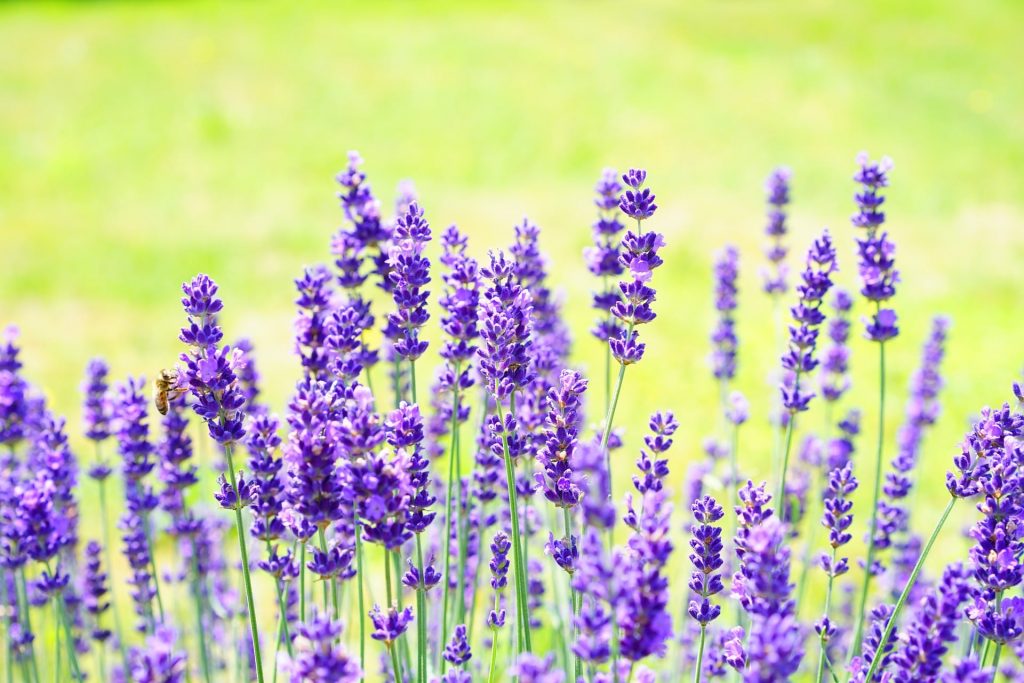Herbs are mainly used in cooking and as a seasoning. However, there are herbs used for other purposes, like making oil, aromatic perfumes, etc. These herbs have a sweet, flowery, fragrant tone and they often induce effects like calmness and relaxation. One of these herbs has become quite popular in recent years – Lavender. Up until now, people only used this herb in its fresh form. Now, they ask about how to dry lavender, because drying lavender means introducing an entirely new set of benefits and uses.
So, if that’s the case and you are dying to know about the processes for drying lavender, you need to move forward this discussion!
Table of Contents
Basics About The Lavender Herb
The lavender herb belongs to the famous flowering species of Lamiaceae. Though the herb is native to the African and Mediterranean zones, it is cultivated in most parts of the world, owing to its popularity. Generally, lavenders grow in flower forms, having a long conical shape with purple-colored petals overlapping each other. In its fresh form, the flowers emit a sweet, earthly fragrance that entices the senses.
The lavender flowers are used in three primary ways:
- In culinary items to induce a taste as well as a pleasant scent.
- In making essential oils and aromatherapy.
- As an ornamental plant.
Because of the various implementations of the herb, people are now looking for ways to prepare dry lavender best possible. So, let’s find out what you can do with the herb without wasting any more time.
Also Read – How to Dry Parsley? All You Need To Know
Top Methods To Dry Lavender
Learning about how to dry lavender can become quite exciting, thanks to the fact that the dried herb has more uses than the fresh form. Here, we will be discussing specific ways, each of which will require a set of tools for the completion of the drying process.
Open-Air Drying Technique
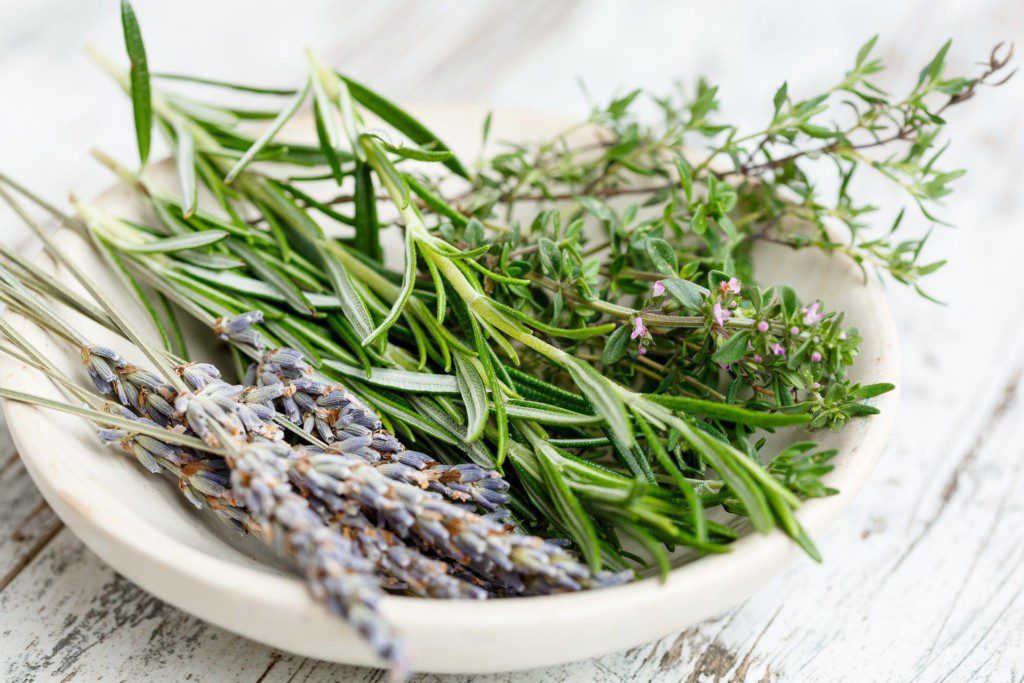
One of the most common methods used in drying the herb is the open-air technique. It is not only the easiest process but also helps in the quick drying of the herb. So, let’s discover the steps of how to dry lavender via open-air dehydration technique.
- Once you have the stalks ready for the use, place them on a countertop or on any surface that gets enough warm airflow. While choosing the place, you need to ensure that it is open, and the temperature is slightly warm due to the atmospheric heat.
- Do not place the stalks close to each other, creating clutter. Rather, you need to put them with a proper amount of space between two adjacent stems.
- Without disturbing the setup, leave the stalks in the open air for the drying process. The dry lavender flower will be brittle and will wilt due to the cells’ lack of water.
- Make sure that while arranging the stalks on the countertop, you keep the flowers flat-faced to get the maximum exposure to the air. Also, make sure that the flowers are not coming in touch with any form of moisture.
Hanging The Lavender Stalks
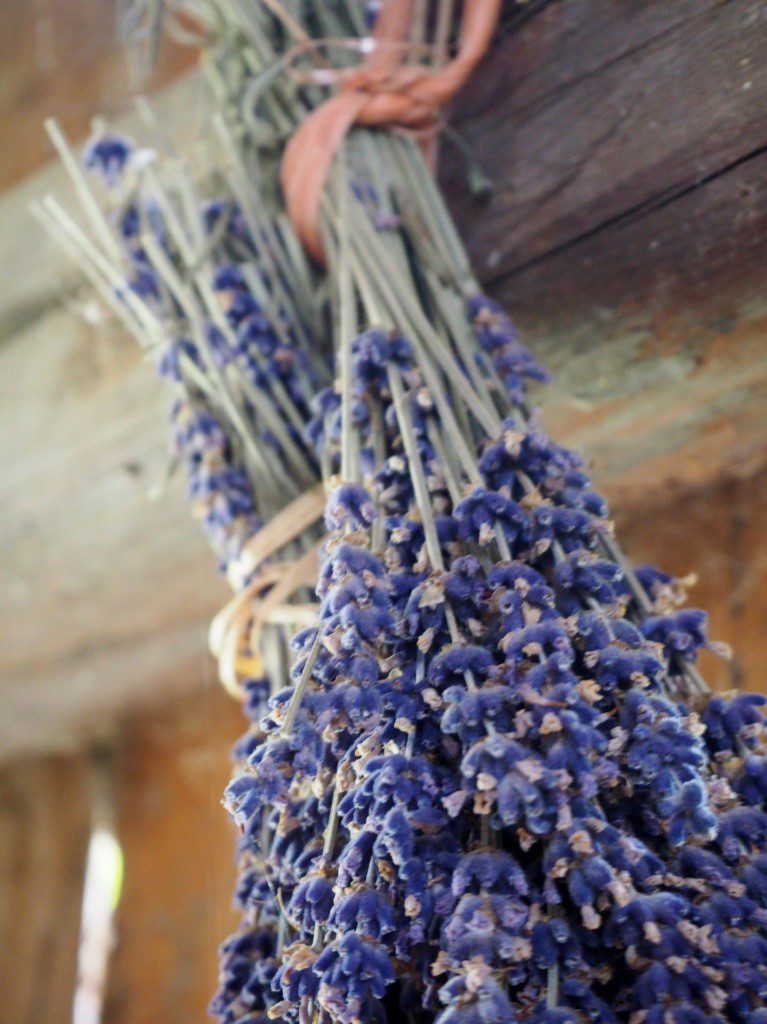
From the name itself, you can understand that here you need to hang the stalks. If you want to know how to dry lavender using this method, follow the steps carefully.
- Collect the fresh stalks where the flowers have already bloomed. Take a couple of stems together, and then tie them up using a rubber band or a thread. If you are using the thread, make sure to tighten the loop so that the stalks wouldn’t slip from the hold after they are hung.
- Once you have prepared a few bunches, hang them from the clothes drying rack or a wall hook. Make sure that you have chosen a dark and warm place, with less humidity in the air. This is because the presence of moisture can alter the drying time and sometimes facilitates the growth of mold and other fungi on the flowers. The dark place will help the blossoms to retain their vibrant purple color throughout the dehydrating process.
- Do not hang two bunches close to each other. It would be best to hang them upside down, with the flowers pointing at the earth and leaving an ample amount of space between them. This will ensure the proper flow of the dry air between bunches, thereby speeding up the method of drying lavender leaves and flowers.
Using The Dehydrator
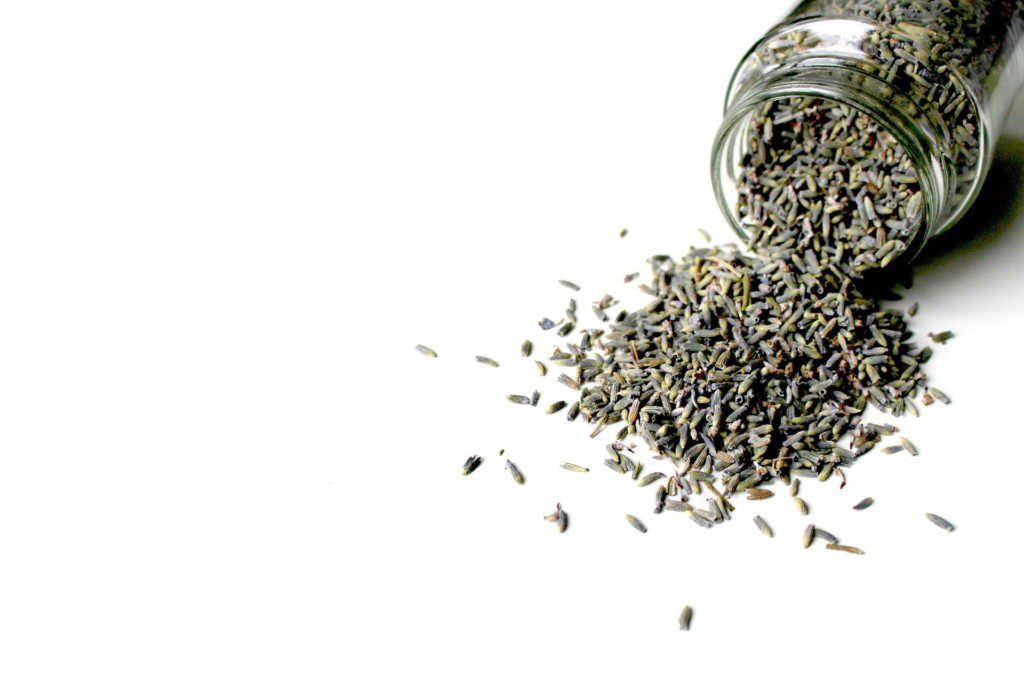
If you want to learn a more efficient way of ‘how to dry lavender,’ you need to use a dehydrator. It is almost similar to a microwave oven, but where the latter is used for cooking foods and drying the herbs, the former is only used for the drying process.
- Cut off the stems from the plant that have completely opened lavender flowers. Ensure that the flowers don’t have a spoilt or dead petal, which might degrade the quality of the dried flowers. Also, you have to check for any insect or bug presence inside the flowers, which usually grows on lavender plants.
- Do not wash the flowers since the presence of extra water will reduce the speed of dehydration. Simply cut off the stems and arrange them in a single layer on a dehydrator tray. Don’t forget to leave at least a 6 to 10 millimeter of space between two adjacent stalks.
- Your dehydrator will have a herbal setting option. Switch that on and leave the tray inside the device for a minimum of two hours.
- After the timer goes off, take out the tray and check whether you are successful in learning how to dry lavender using the dehydrator or not. For this, check whether the leaves, flowers, and the stems have become brittle or not. Also, if the drying process has been done correctly, the leaves will form papery, unlike the bulky moisture-filled fresh petals.
Oven-Drying Technique
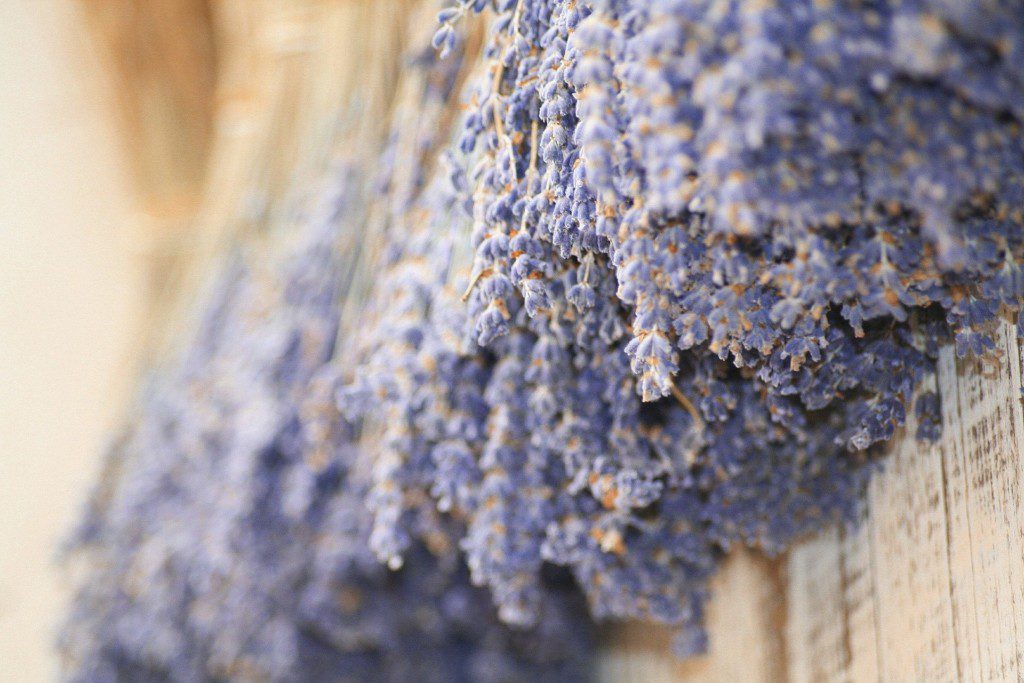
Another excellent method you need to learn about ‘how to dry lavender’ is the oven drying technique. Here, you need to have a working oven, a tray, and brown paper.
- If you have grown the lavender plants in your garden, make sure that you are snipping off the stems having healthy and bright flowers. If you are buying the stalks from the market, make sure they are fresh, and the purple color hasn’t been fed yet.
- Once you have collected the stalks, place them on the oven tray in a single layer. If you place the flowers close to each other, they won’t get dehydrated evenly and adequately. This is why leave a distance of ten millimeters between two lavender stalks while arranging them on the tray.
- Set the temperature of the oven around a hundred to two hundred degrees Fahrenheit. Once the temperature is set, insert the tray inside the oven and close the door, leaving behind a small gap. This small opening will allow the moisture to escape from the inside without any hassle. Set the timer for ten minutes, and wait for the timer to go off.
- Once the alarm starts beeping, take out the tray and watch whether you have a proper dry lavender plant or not. This can be assessed by touching the flowers and checking whether they have a papery feel to it or not. If all the moisture is soaked off, the stems, leaves, and the blooms will become brittle.
- If the petals still feel soft and have moisture left, put the tray inside and wait for another ten minutes. After all, they do say patience is a virtue.
- Once all the flowers and the stems have dried up, use your finger to run along the stem’s length. This will detach the dried flowers from the stem, and you will be able to quickly gather the drying flowers of the lavender.
Drying In A Microwave Oven
To learn how to dry lavender in the oven, you will need two brown papers or a single kitchen towel. The rest of the methods are discussed below:
- After de-stemming the leaves and the blossoms off the stalk, place them on the kitchen paper or the towel. This will prevent the petals from sticking onto the surface of the tray.
- Turn on the microwave oven and set it at its highest temperature. Place the tray inside the microwave once you are done with the arrangement of the flowers.
- Leave the tray inside for fifteen to twenty minutes and check afterward whether the blossoms have been dried off entirely or not. If you still think that the blooms have retained a little moisture, you need to put back the tray inside the oven for another ten minutes till the petals become brittle and papery.
Preserving The Dried Lavender
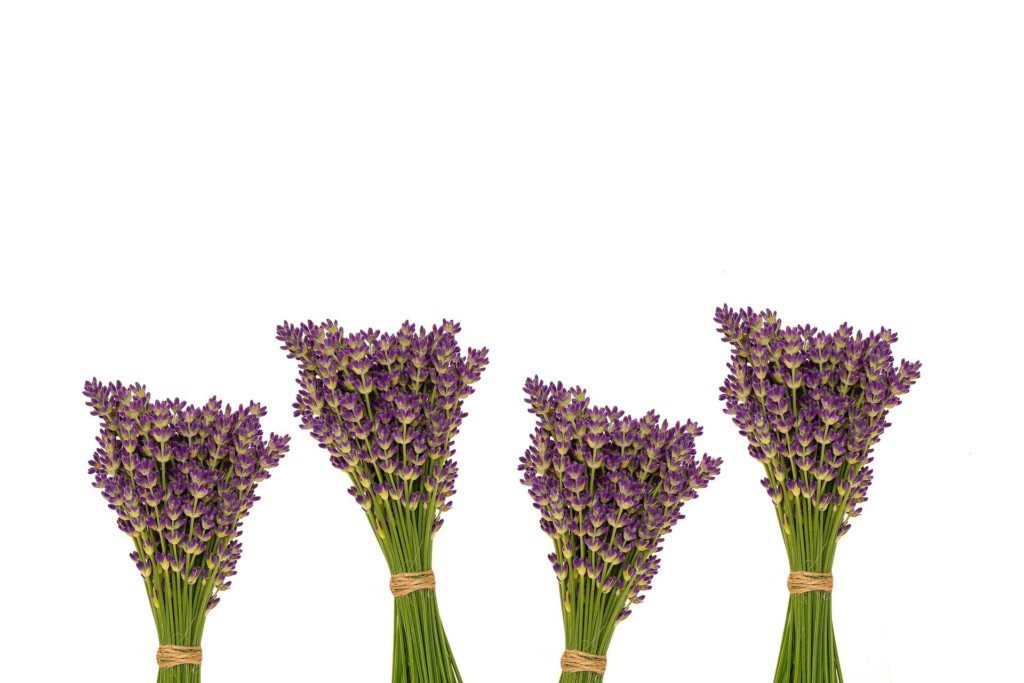
Now, since you already know how to dry lavender, it’s time for you to understand how you can maintain the dried flowers without compromising the scent, color, and taste. This is why we have discussed some ways to preserve lavender in the best possible manner. Let’s find out!
• Airtight container – Your first option will be an airtight container. These containers have lids that are closely packed with the container’s rim, leaving no room for air to escape or enter. This will help reduce
• Choose a dark place for preserving lavender without compromising the dried flowers’ color. The absence of sunlight will prevent the color components from getting decayed, thereby helping you preserve the blossoms’ bright color.
• Low humidity – You need to choose a place with low humidity levels. While learning how to dry lavender, you have seen that one needs to avoid any form of contact with water or moisture. So, if you keep the dried lavenders in a moist place, there will be high decaying or rotting chances. This is why you need to avoid areas like kitchen counters having the washbasins, bathroom cabinets, window sides, etc.
• Detach the flowers before storage – One of the crucial steps you need to learn about lavender’s preservation process is that it cannot be stored with stems and leaves. So, once you have the dried stalks, you need to separate the flowers from the step. Use your thumb and index finger and swipe them along the length of the stem. This will help you to peel off the flowers from the stalk easily. However, be careful of the thorns if there are any.
Miraculous Benefits of Lavender Herb
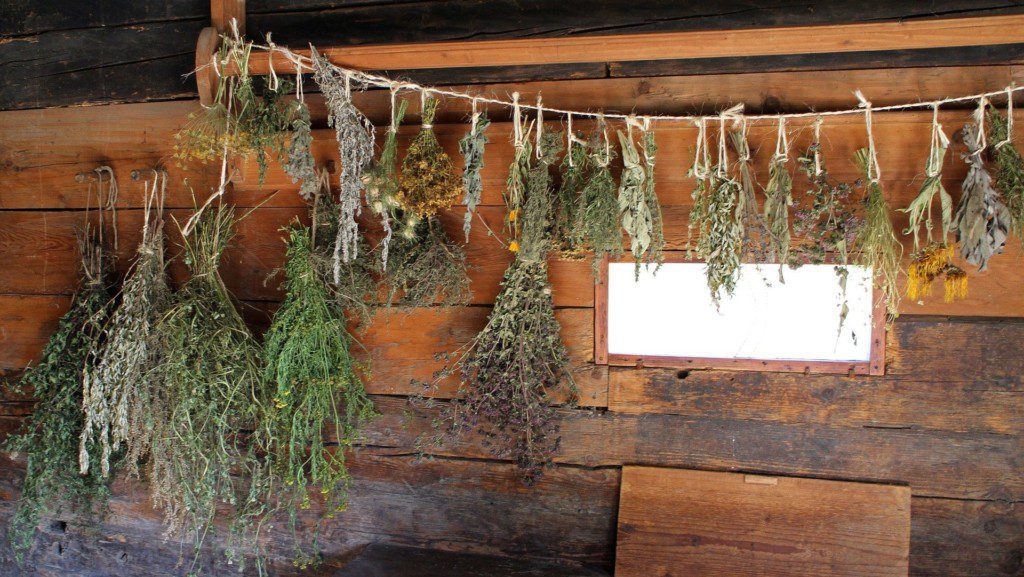
The next thing that you have to know about the lavender drying flowers is the benefits. Let’s see what perks you can enjoy after learning how to dry lavender in five different ways.
1. An effective bug repellant: One of the significant uses of the Lavender’s dried flowers is its bug repellant ability. In combination with dried citrus fruit and thyme, Lavender can help you keep bugs away from your home, furniture, and carpets.
2. A great addition to your tea collection: Dried lavender blossoms can be transformed into a fine or coarse powder with a mortar and pestle. Use the powder in your tea and infuse the lavender’s flavors and scent in the beverage.
3. Helps with insomnia: People suffering from sleep problems and insomnia can infuse the dried flowers in a carrier oil for inducing calmness and relaxation. This will promote sleep.
4. Good for skin diseases: If you are suffering from acne or any other bacterial and fungal infections, you can use the dried flowers to reduce the infection and alleviate the dermal pain.
5. Boosts immunity power: When you are infusing the dried flowers into any food, you are making way for strengthening your immune system. Dry lavender has a lot of anti-bacterial elements and antioxidants. These compounds will help your body to fight against diseases easily.
6. Alleviates inflammation and pains: If you are using the essential oil prepared from lavender flowers, you will know that it helps in reducing the inflammation of muscles. Thus, it alleviates the pain and provides relief to those suffering from problems like muscle swelling, and osteoarthritis.
Multifarious Uses of the Dried Lavender
Learning about how to dry lavender is undoubtedly a plus point. But, apart from this, you need to know the use of the dried herb. After all, you cannot just leave the brittle buds and flowers in the containers to find a way to use it in the future. So, here are some of the uses of the dried lavender buds and blossoms.
- Right before cleaning the house floors, spread the flowers and the buds on the surface and leave them for a couple of minutes. This will induce the fragrance into the air.
- Fill the dryer bags with the lavender buds and leave them between the clothes. Over time, the dried flowers will emit the scent, thus helping you to keep the clothes fresh.
- Use scentless carrier oil and pour it in the airtight container where you have stored the lavender. Keep it overnight in the same setup. You will be able to use the lavender oil from the next day for various purposes.
- If you are using any oil for repelling the bugs from your home, infuse the dried lavenders in the oil. The smell of the flower will enhance the oil’s repelling action, thereby helping you prevent the insect and bug infestation.
- Add them to a glass of lemonade to enhance the taste and relaxation quotient.
- Culinary uses – Use the dried powder of the lavender flower in addition to thyme and pistachios to make a crust on the roasted lamb chops.
- Make lavender scented candles by infusing the dried lavender buds into molten wax and then cooling down.
Conclusion
In this article, we have discussed almost every fundamental detail about the dry lavender leaves. You now know the five ways of dehydrating the herb, and hence, you will be able to choose the most convenient way to carry out the process. The various methods of using the dried lavender will help you experience the plant’s earthiness and floral scent without any hurdle.
Disclaimer – This content including advice provides generic information only. It is in no way a substitute for qualified medical opinion. Always consult a specialist or your own doctor for more information before making any dietary changes.

